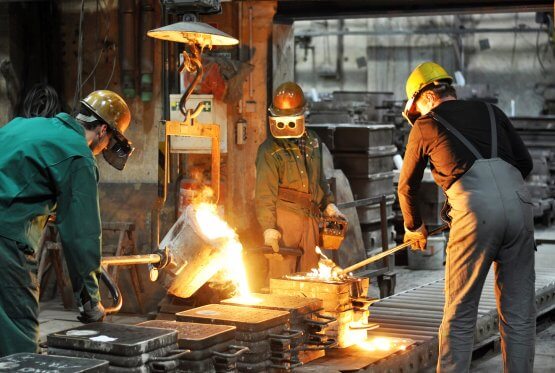Lukens Steel Company Solves Several Cooling Water Filtration Problems

LAKOS Solves Several Steel Mill Cooling Water Filtration Problems
Lukens Steel Company in Coatesville, Pennsylvania produces carbon, alloy and stainless plate steels. Cooling water, in both contact and non-contact applications, is critical to many operations in the manufacture of primary steel products. Contact cooling generally imparts metal oxides to the water, requring removal before subsequent usage in order to avoid problems. In each of the cases described below, a LAKOS Separator has been installed to remove unwanted solids in the cooling water streams. All systems are expected to save costs in both cleaning and maintenance, with projected payback in two years.
SYSTEM IDENTIFICATION: Tank vacuum degasser condenser water VOD condenser water
SOLIDS/LIQUID: Metallic oxide grit, water Heavy loading of metallic oxide grit, water
PROBLEM: During degassing and VOD processing of stainless steels, process vacuum is drawn by condensing steam through ejectors. The condensate water increases in temperature and must then be directed to cooling towers, where oxide grit in the water tends to clog the fill packs in the cooling towers, reducing both hydraulic capacity and thermal efficiency. Tower headers had to be opened annually to remove accumulated grit (using specialized high pressure spray equipment). This annual cleaning cost approximately $5,000. At one point, the fill packs became completely clogged, requiring total replacement (a cost of $50,000). When more towers were erected to double the cooling capacity, Lukens Steel sought added protection.
SOLUTION: Many types of strainers, clarifiers and filters were evaluated for this application, but Lukens Steel selected two LAKOS PREP Systems, based on effectiveness, ease of maintenance and cost. An LAX Separator handles the tank degasser while a larger unit is required on the VOD hotwell due to higher water flow. They are expected to increase life of the cooling tower fill packs by five years or more.
SYSTEM IDENTIFICATION: Rolling mill roll cooling water
SOLIDS/LIQUID: Mill scale, water
PROBLEM: When rolling hot steel ingots or slabs into plates, heat is transferred to the rolls, causing them to expand. At the rolling mill, cooling water is used to maintain dimensional stability of the work and backup rolls. This is critical to keep the product within strict gauge tolerances and limit product rejection scrap. Mill scale accumulates from high-pressure descaling, fouling the cooling water.
SOLUTION: Roll cooling water is pumped from a nearby scale pit through a LAKOS Separator to remove the mill scale. The unit purges into a separate section of the scale pit for easy removal and disposal.
SYSTEM IDENTIFICATION: Heat treatment cooling water reservoir
SOLIDS/LIQUID: Iron oxide scale, water
PROBLEM: Once steel is hot rolled, much of the plate product is subsequently heat-treated to meet required property specifications. One form of heat treatment frequently used is a water quench and temper. In quenching, oxide scale which has formed on the plate surface during heating deposits into the cooling water. The water is directed to a reservoir where the scale settles.
A LAKOS Separator with Auto-Purge was installed on a rollcooling recirculation system. Pulling from the scale pit overflow,
LAKOS now delivers clean water to the operation, achieving production for the roll-cooling process. Another LAKOS Separator is used as needed to clean out mill scale which has accumulated in the settling basin. Once a year, the basin is “vacuumed” by a mobile dredge and circulated through the LAKOS Separator, discharging purged solids directly into “mining-size” dump trucks.
SOLUTION: Scale is periodically dredged and sent through a LAKOS Separator, mounted on a 30-foot high portable stand. The separated scale is purged directly into the bed of a huge off-road dump truck for disposal.